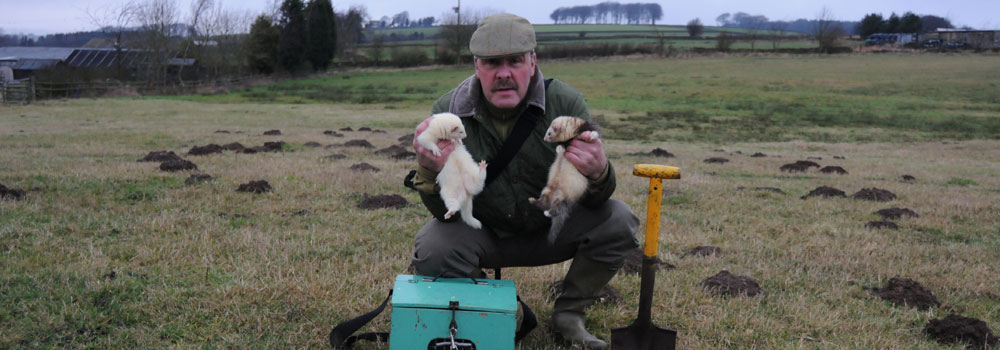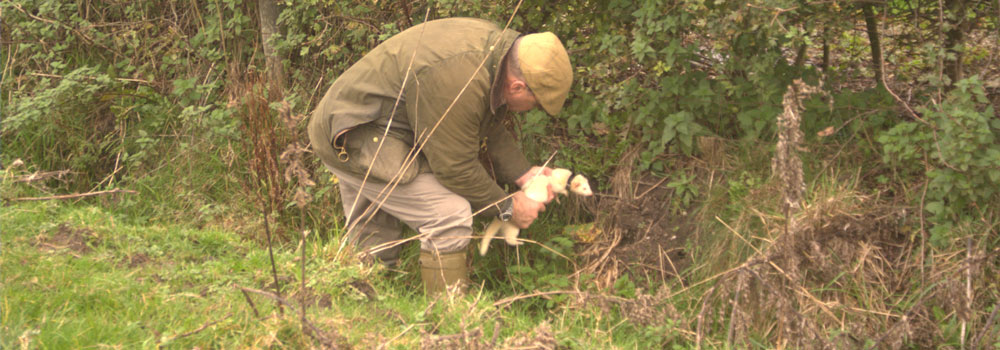Methodologies
Rabbit Management
Because of the rabbit's natural capacity for population increase, complete eradication is not possible and to attempt it is impractical.
Rabbit populations can withstand high mortality from natural causes, so control efforts by man must add to these, not merely replace them, if management is to be effective. Because of the size of the effort required, the aim should be to reduce rabbit numbers to levels at which damage is economically acceptable. Continuous management will be necessary to ensure that this condition persists.
Rabbits have no respect for boundaries, and the most effective results will be achieved only if management action is also undertaken on adjoining land at the same time.
Advice on managing rabbit populations, including a summary of the relevant legal considerations, is available on The Natural England website (www.naturalengland.org.uk) in leaflet TIN003; there is also specific advice on cage trapping and rabbit-proof fencing on the same website.
Methodology
We use a range of methods to manage rabbit populations, dependent on the specific circumstances, as we believe that an integrated management programme is most effective; these methods can be either lethal or non-lethal, again dependent on circumstance. Our methods include:
- Ferreting
- Trapping
- Shooting
- Fencing
- Tree Guards
Ferreting
Arguably the most traditional method of managing rabbit populations, ferreting involves the use of teams of ferrets to chase the conies from their underground refuges, into nets. Once in the nets, the rabbits can be humanely dispatched, and their flesh can then go into the human food chain.
Trapping
We only use non-lethal traps in our work. This allows the rabbits to be humanely despatched, and their healthy meat used for human consumption.
Shooting
In certain circumstances, and where it is safe to do so, we shoot rabbits. Dependent on the circumstances, we may use high-powered air rifles, .22 rimfire rifles, or shotguns. Whichever method we use, the meat is used for ether human or animal feed.
Fencing
Where the rabbits are a nuisance, but a non-lethal method of management is required, we can install various types of fencing and netting to help prevent the rabbits damaging trees and plants etc.
Tree Guards
Rabbits can damage or even kill young trees of many species, while damage to the bark of large trees and semi-mature hedgerows is also harmful. In some circumstances, rabbits may even prevent natural regeneration in woodlands. This rabbit damage may include the animals eating young seedlings, destroying shoots, browsing branches and removing bark.
Damage to trees, caused by rabbits either browsing or bark-stripping, is a major problem in woodlands throughout the UK. In simple terms, the more rabbits present in the area, the greater the level of damage.
Tree guards can be an effective way of limiting the damage.
Reports & Plans
We have never found two areas where the rabbit problems are identical, and so there can be no “off-the-shelf” answer without proper research and planning. Before embarking on any rabbit management, we will carry out a thorough survey, and produce a report detailing our findings and our recommendations for effective rabbit management on your land.
We will also look at, and advise on, any conflicting objectives, and can carry out an independent assessment, giving advice to all parties before negotiation or litigation, thereby saving you time and money.
Once our methodology has been agreed with you, we will commence work, monitoring our work and results, and presenting monthly reports to you and/or your manager/agent, to ensure that all concerned are up-to-date with what is happening on the ground.



